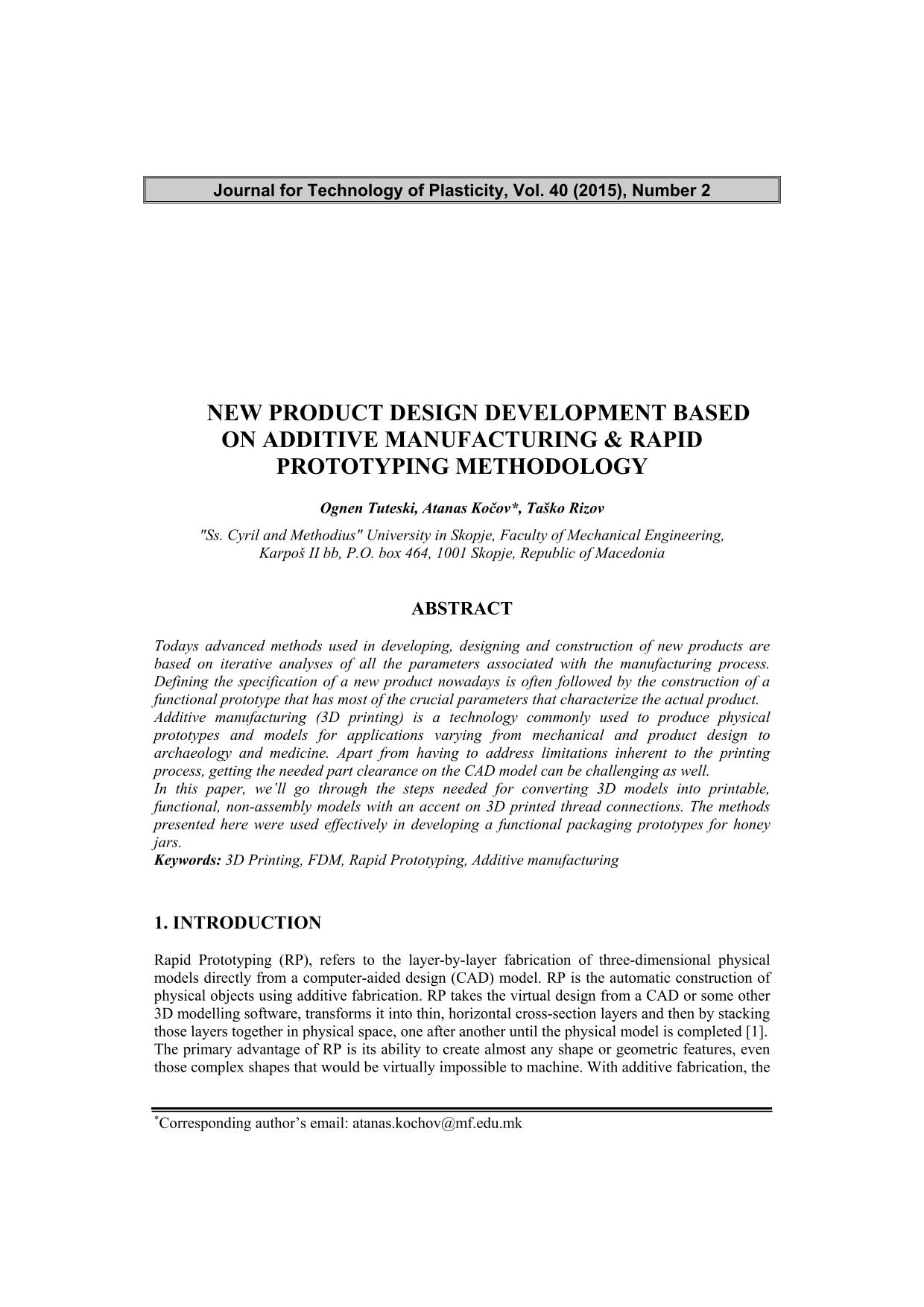New product design development based on additive manufacturing & rapid prototyping methodology

Published 2015-12-21
abstract views: 20 // Full text article (PDF): 0
Keywords
- 3D Printing,
- FDM,
- Rapid Prototyping,
- Additive manufacturing
How to Cite

This work is licensed under a Creative Commons Attribution 4.0 International License.
Abstract
Todays advanced methods used in developing, designing and construction of new products are based on iterative analyses of all the parameters associated with the manufacturing process. Defining the specification of a new product nowadays is often followed by the construction of a functional prototype that has most of the crucial parameters that characterize the actual product. Additive manufacturing (3D printing) is a technology commonly used to produce physical prototypes and models for applications varying from mechanical and product design to archaeology and medicine. Apart from having to address limitations inherent to the printing process, getting the needed part clearance on the CAD model can be challenging as well.
In this paper, we’ll go through the steps needed for converting 3D models into printable, functional, non-assembly models with an accent on 3D printed thread connections. The methods presented here were used effectively in developing a functional packaging prototypes for honey jars.

